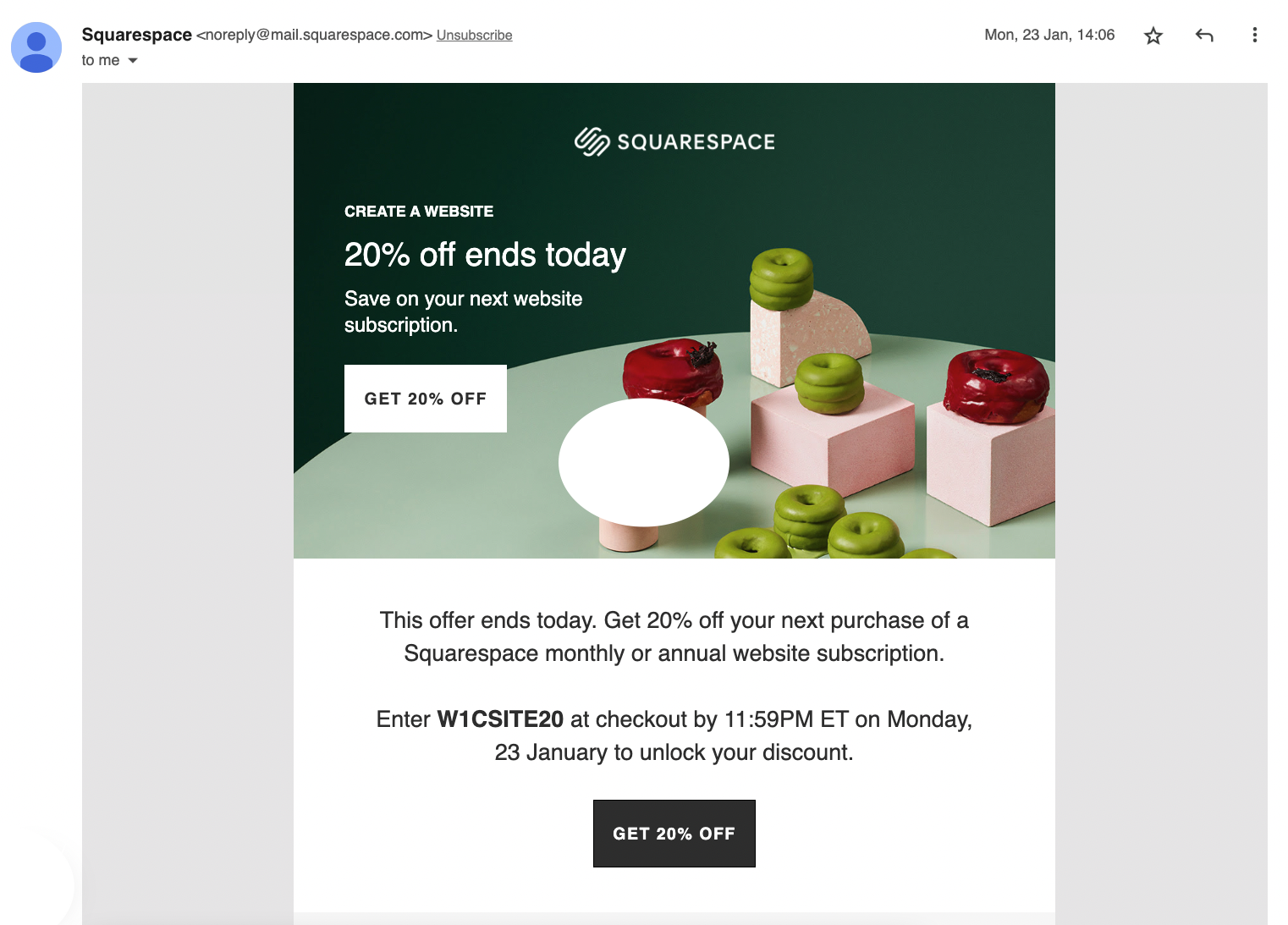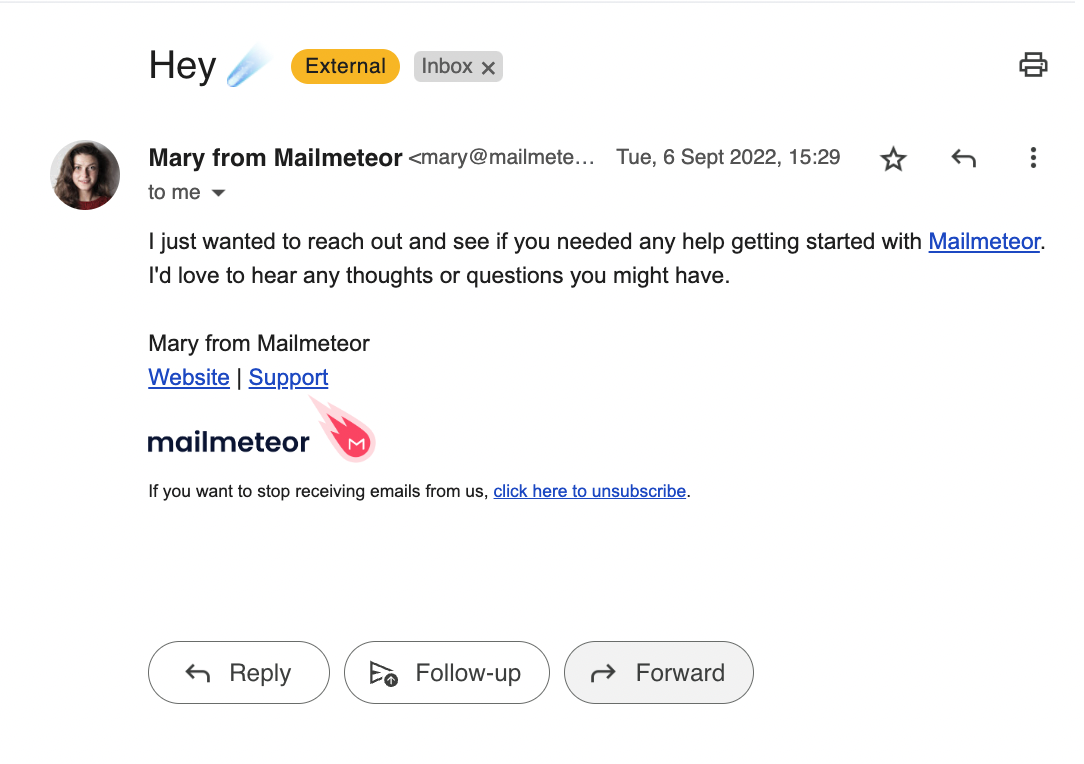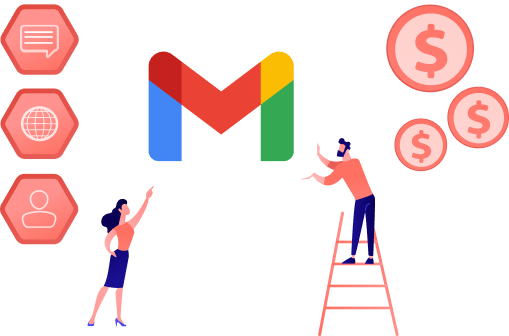Email marketing is still one of the highest return-on-investment marketing channels with a reported return of $36 for every $1 spent.
And one of the safest too…
Unlike marketing channels like social media, your email marketing list of contacts is something you own and no one can take it away from you.
And that’s why we’re seeing 37% of brands increasing their email budget in 2022.
So if you’re looking to get started, but feeling overwhelmed with all there is to know about email marketing, fear not.
In this post, I’ll walk you through why you should even care about email marketing. The value it can bring to your business. The types of email marketing that make up a solid email marketing strategy. And how to get started.
Let’s jump in.
What is email marketing?
Email marketing is the term used for businesses to communicate their products, services, and information through emails. As well as a way to build long-term relationships with customers, and keep them coming back for more.
Why is email marketing important?
Email marketing is important for any business, creator, or organization for several reasons.
For starters, unlike social media marketing where you’re prone to ‘platform risk’ Email marketing is a channel you own and no one can take it away from you.
This means you can send and say whatever you like (without breaking the ‘rules’).
Plus, unlike social media platforms where your customers are bombarded with brands competing for attention — the inbox is a comparably calmer place. (And this ties into cost-effectiveness too.)
With email conversion rates and eyeballs on emails is considerably higher as there is less distraction and more chance of delivering your message.
And as a result, you get to build a strong connection with your email recipients and boost their lifetime value.
So if you’re not using email, chances are you’re missing out on a way to build relationships, and as a result — leaving money on the table.
The 3 types of email marketing (with examples)
I’m sure you’ll already be familiar with the promotional emails flooding your inbox — but email marketing doesn’t stop there. Let’s explore a few types of email marketing and how they all fit together.
1. Promotional emails
Up first, we’ve got promotional emails. This is what springs to mind first when thinking about email marketing.
These can come as seasonal discounts, limited-time offers, and initial welcome emails like free shipping to get you on email lists.
While promotional emails like this are most common. They are best blended with what I like to call ‘relationship-building emails’. (Also known as informational emails up next.)
Using a blend of email types prevents you from ‘churning and burning’ through customers by bombarding them with promotions.

2. Informational emails
Informational emails are the kind of emails you want to send if you want people to stick around and build a connection with you instead of bombarding them with offers.
Informational emails come in the form of newsletters, product tips, and sharing news with customers.
The whole idea surrounding information emails is to provide value to your recipients. This can be in the form of what’s going on, what they missed, and what news and information they might like.
An easy way to start with informational emails is to start a monthly newsletter to share the latest news. Or put together a sequence to show people how to use your product.
Here’s an example I wrote for a popular design software company:

3. Reengagement emails
Inboxes are competitive places, and customers and newsletter subscribers drop off. Reengagement emails are like throwing a line out to these customers in an attempt to re-engage them.
These are often seen as specific discounts, the team reaching out for feedback, or creative offers.

How to do email marketing
Now you know the benefits of email marketing. Chances are you want to get started and know how email marketing works.
Like anything in life, taking the first step can feel like a monstrous task. But it doesn’t have to be that way…
Firstly, you’ll need to get set up with an email marketing platform to send your marketing emails.
1. Choosing an email marketing tool
There are TONS of email marketing tools on the market and choosing one depends on several factors, including…
- Price: Depending on how far along you are on your email marketing journey, your budget will differ. Email marketing platforms range from $0 to hundreds of dollars.
- Types of business you run: Some platforms work better for different businesses. For example, Klaviyo is popular for e-commerce as they have a bunch of automation paired with customer spending. Whereas something like Mailmeteor is perfect for someone wanting an email marketing platform for Gmail.
- Your email marketing goals: Do you want to create stunning HTML emails as grow a huge unicorn startup business? Or do you want an easy way to stay in touch and build loyal fans?
- Sending volume: How many emails do you want to send? If it’s less than 2000 a day. Something like Mailmeteor lets you use up all of Gmail’s sending limit to maximize deliverability. But if you need to send 100,000+ in one go an SMTP service like SendGrid might work better for you.
Feeling overwhelmed? Here’s an easy way to get started with email marketing…
Rather than getting overwhelmed with a bunch of platforms that offer a ton of features…. or wasting weeks in analysis paralysis.
I’d recommend the sooner you actually start sending emails, the sooner you’ll find out what’s right for you.
That’s why, I recommend you start with an email marketing platform for Gmail. This way you don’t have to spend weeks learning something totally new — and can start sending emails.
Mailmeteor is the number 1 email platform for Gmail used by 6 million people globally and recommended by Google itself. If you’re looking for a powerful way to get started, whilst using the tools you already know, this is for you.
You’ll be able to:
- Send emails to 1000s of people with personalizations like injecting recipients’ names so it feels like it was written just for them.
- Schedule emails to send at defined intervals and days.
- Send sequences of emails to welcome people to your brand or follow up on autopilot.
- And track opens, clicks, and more.
To get started, simply log in with Gmail here where you can send your first email marketing email today.
2. When is the best time to send email marketing emails?
When thinking about when to send you marketing emails, it’s first important to think about which of the 3 types of marketing emails you’re sending: Promotional, informational, or Re-engagement emails.
a) If it’s a promotional or re-engagement email — timing is everything
In the e-commerce world, for example, you might send a promotional email following a purchase to tell your customers about your referral program while they’re in the ‘buying mood.’
Or you might send a re-engagement email if they haven’t checked out (also known as abandon cart recovery emails.)
b) If it’s an informational email — it’s more nuanced
If you’re running a software or e-commerce company. You’ll want to send out emails on how to get the most out of your product — so they reach the ‘aha moment’ of the value you offer — and come back for more.
That’s why you’ll want to time them when the intent is highest, often directly after sign-up or purchase.
For newsletters and general updates, you’ll want to consider when people are most likely to open their emails. CoSchedule analyzed 14 studies reporting Tuesday, Thursday, and Wednesday (yup, in that order) are the best days to send emails — avoiding Monday catchups and Friday blues.
3. How to Build and grow your email marketing list
You need people’s emails to send out email marketing. And to do that you need an email list-building strategy where people sign-up to receive emails from you.
Because everyone you’re emailing needs to have given you permission to email them in the first place.
Now there are many places people can sign-up to get your emails, including:
- Your website or blog.
- Social media page.
- Manually asking people to join.
- They’ve signed up for an event.
- Made a purchase from you.
And what’s right for you depends on your business.
5 tips to do email marketing like a pro…
Should I send text-based emails or designed HTML emails?
You don’t need to create well-designed emails. In fact, although you might want to, Hubspot reports that simple text-based emails actually convert better and have more chances of getting opened.
Personalize your email marketing efforts to boost response
Many people make the mistake of writing emails as if they were addressing a crowd. Saying things like ‘we wanted to tell you all about this thing we’re doing’ — this is a mistake.
The beauty of email is you can write an email as if you were addressing one person to make it feel like you’re writing directly to them.
For example, how much better does this sound, “I wanted to invite you to this ‘thing’ we’re doing next week”.
Now you can take personalization even further with platforms like Mailmeteor and have the person’s name, business, and anything else personal to them be inserted into each of your emails.
Allowing you to address people by name, even though the same email is going to 1000s of people.
Track how recipients respond to email marketing
Email marketing analytics and things like A/B testing (where you test two emails and see which performs better) is a great way to see the impact of your efforts and improve your email marketing strategy over time to increase email ROI.
With email marketing platforms like Mailmeteor. You can track opens, clicks, responses, and much more to see what resonates with your customers most. Learn more.
Keep your email marketing list clean
Most email marketing platforms bill you by how many emails you send. And over time some people on your email list will stop reading your emails. That’s why it’s important to do a little spring cleaning. Now how you clean your list is unique to you but if someone hasn’t opened in 6+ months you might want to think about removing them.
What you should do now?
Hopefully, by now you know exactly what email marketing is and its benefits.
If you’re looking to send your first marketing email, but don’t want to waste time learning complex tools — you’ll love Mailmeteor.
used by 6 million users globally and recommended by Google themselves, it’s the leading email marketing platform for Gmail. All you have to do is open a Gmail account and log in here.
We’re currently running 20% off the Mailmeteor Pro plan for a limited time 🤩
Yes, it’s a monthly subscription, but imagine how long it would take to write and send in hundreds of emails manually & sequentially? 6 million users find it a no-brainer, even before the ROI it can generate for you.
➤ Send 10,000 emails with Gmail using Mailmeteor
Interested in becoming an email marketing pro?
Our blog is full of ways to skyrocket your Gmail efficiency, here are some favorites relevant to you:
- Gmail deliverability from A to Z
- 9 must-have Gmail skills everyone should know
- 25 Gmail Tools and Apps To Boost Your Productivity
- How to send Gmail email sequences in minutes without complex email tools?



